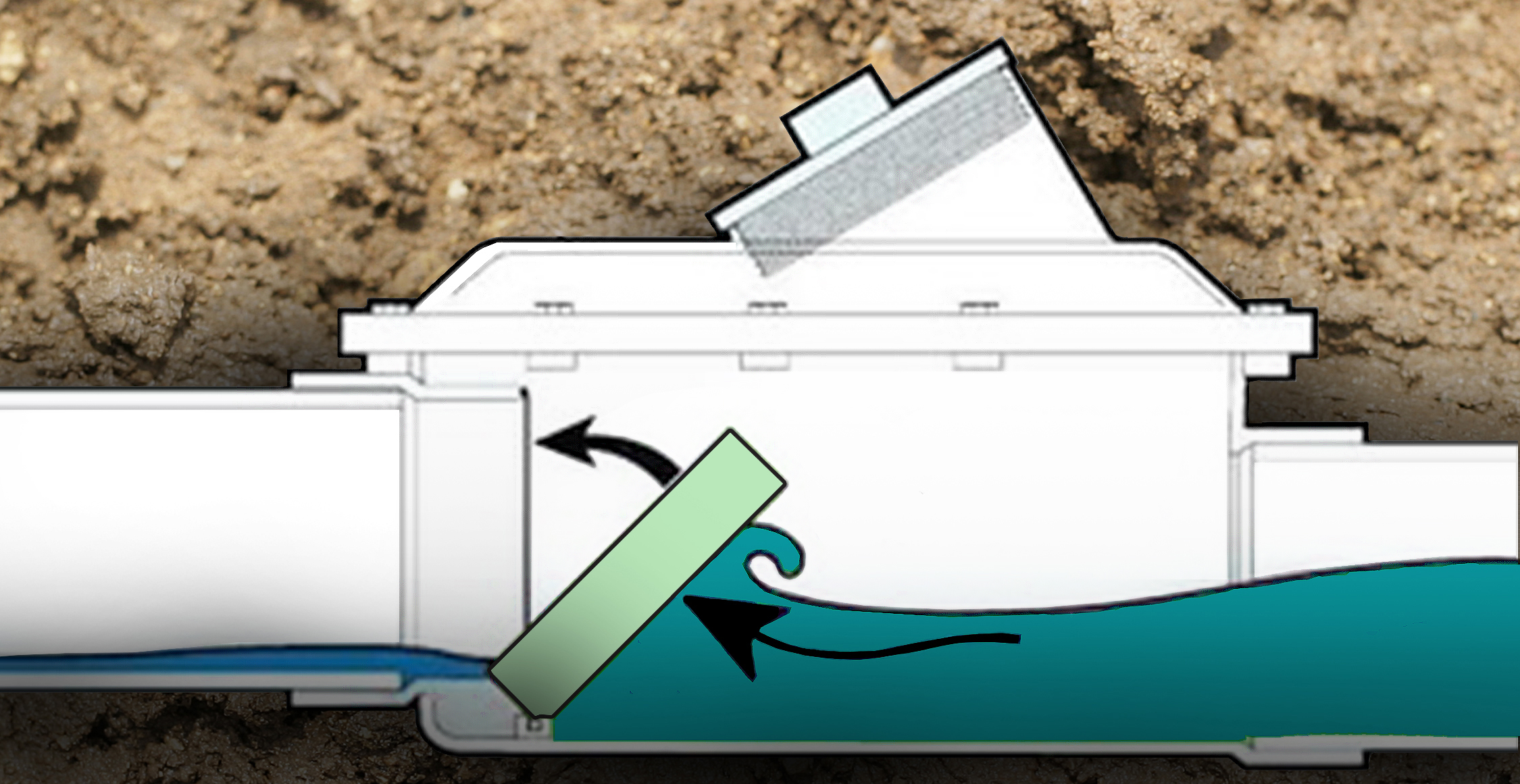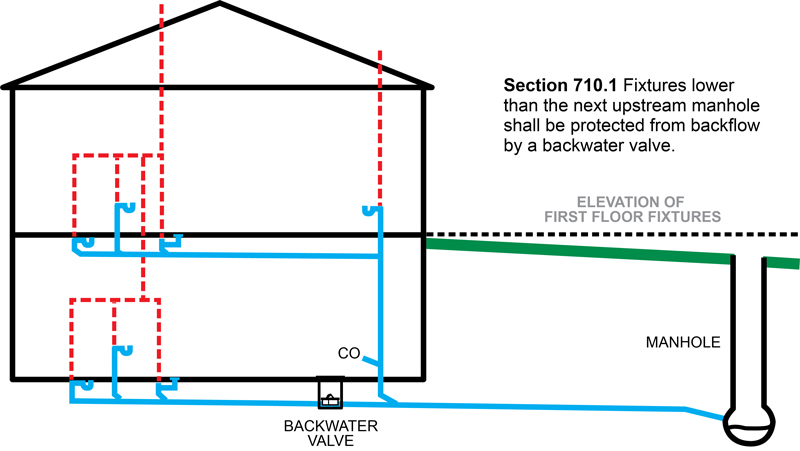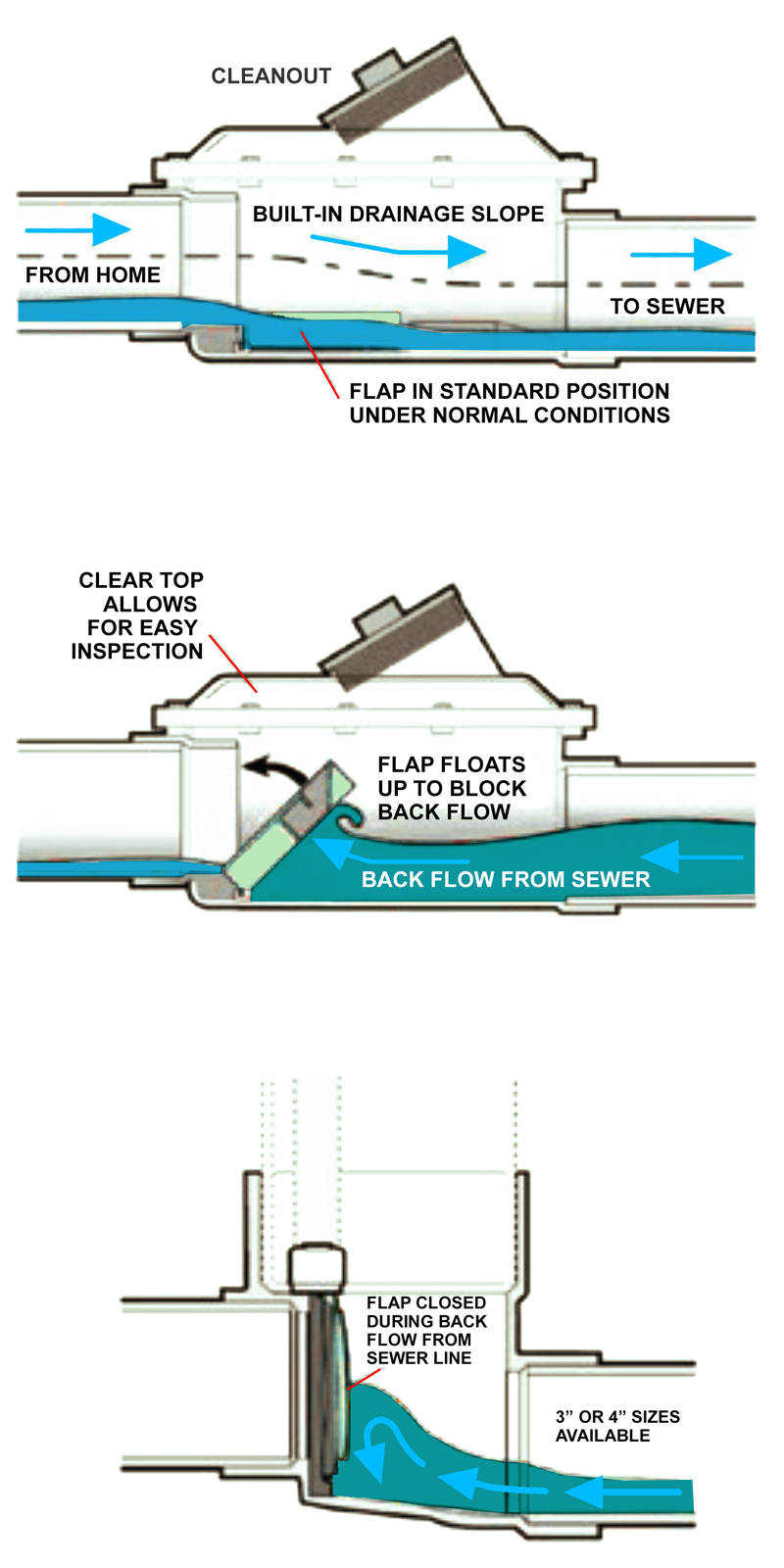
Have you ever experienced an unexpected downpour of rain, which threatened your home with sewer water backup problems or water problems in general? Fixing clean rainwater backups wherever they may occur is already bad enough — imagine if it was sewage water, which ruins anything it contacts or touches. Needless to say, necessary repairs could be costly. On the bright side, there are systems or products to help prevent those types of disasters, and one of them is the installation of a certified listed backwater valve. It is too late to prevent damages when they have already occurred, so it is important to verify your system is properly protected.
You may be asking what is a backwater valve, what does it do or how does it work? A back-water valve, which is sometimes called a backflow or sewer backup valve, is a valve that is installed directly on a sewer line. This device is intended to allow flow of sewage only in one direction — away from a home. When we experience heavy rainfall, there is a greater possibility for the municipal sewer lines to become full or overwhelmed (note: this does not apply to those who have septic tanks in the illustration below). This leaves the flow of sewage with nowhere to go but in the path of least resistance, the direction back to the home.

Backwater valves are designed to prohibit sewage, or any type of water, from flowing back into the home. The backwater valves are designed in such a way that they have an access box with a clear cover or access opening in order to verify it is functioning properly. When looking inside the valve you will find a flap in a normally open position, which is intended to allow flow in one direction — away from your home. In the event water or sewage is flowing back toward your home, the valve is built with floaters that will lift, causing the flap to close and prevent any backflow. The beautiful aspect of these valves is that you do not need to reset them when activated, since gravity will allow the flap to fall right back into the normally open position, leading away from your home to the municipal sewer line.

Backwater valves are tested and listed to either standard ASME A112.14.1 & CSA B181 (Backwater Valves) or IAPMO IGC 305 (ABS and PVC Horizontal Backwater Valves with Lifting Devices) in order to verify proper function. There are many types of backwater valves, depending on your need and application, such as horizontal backwater valves, combination horizontal backwater valves and manual gate valves, terminal backwater valves, combination floor drains with backwater valves, vertical or 90-degree backwater valves, and related products. ‘These valves are an essential way to prevent costly damage from things you desire to flow out of your home from coming back in. Is your plumbing system adequately equipped to prevent a costly disaster? Including an appropriately listed and certified backwater valve is a great place to start.

Mark Alvarez
Last modified: May 8, 2024
